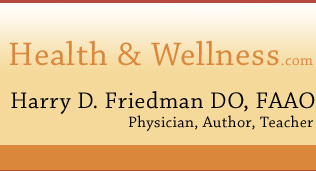In the beginning, Dr. Robert Furchgott in 1980 found that the endothelial lining of the walls of blood vessels made a substance that kept the vessels smooth and dilated. This was Nitric Oxide (NO). Soon it was discovered that l-arginine converts to NO in the endothelium.
I learned about l-arginine in 1991 when I was in a professional association teaching physicians with Victor J. Dzau, MD when he was director of Cardiovascular Research at Stanford University Medical Center.
Dr. Dzau was appointed Chancellor for Health Affairs at Duke University and President and CEO of the Duke University Health System effective July 1, 2004. He is also James B. Duke Professor of Medicine and Director of Molecular and Genomic Vascular Biology at Duke.
Prior to that, he was the Hersey Professor of the Theory and Practice of Physic (Medicine) at Harvard Medical School, Chairman of the Department of Medicine at Brigham and Women's Hospital, and Physician-in-Chief and Director of Research at Brigham and Women's Hospital, Boston. Prior to his work at Harvard and Brigham and Women's, he served as Arthur Bloomfield Professor and Chairman of the Department of Medicine at Stanford.
He was the first to explain to me the extraordinary observation that atherosclerotic heart disease could not only be controlled but reversed. His research touched on clinical improvement and was forwarded with multiple studies by John P. Cooke, MD. Dr. Cooke is presently head of Cardiovascular Research at Stanford.
My personal story began with meeting these individuals. Since I had been noted to be heavily laden with atherosclerosis in my abdominal arteries at age 36 I took an uncommon interest in their research into the reversal of atherosclerosis. After 12 years of l-arginine use, I have no evidence of atherosclerosis. The testing available today with arterial wave form analysis allows me to monitor how well I’m doing with my personal regression therapy.
What other studies support this therapy?
There many studies on the effect of l-arginine on the lining of the artery, the endothelium. The results depend on the structure of the study, the patient population and dosage of l-arginine used. Nothing works in every situation but in my experience it works in 99% of the patients I see with vascular disease.
It does not change the endothelium in healthy people. It will change it in people who are asymtomatic but who have elevated cholesterol, hypertension or the impact of metabolism problems due to vitamin deficiencies.
Heart failure is a complex situation but the endothelial dysfunction is improved with l-arginine. Other conditions include pulmonary hypertension, transplant vasculopathy, tobacco use, type 2 diabetes mellitus, and salt sensitive hypertension.
In patients with coronary artery disease, 2 of 4 have shown increased endothelial function, treadmill exercise time and improved symptoms. In peripheral artery disease walking distance improved 76 per cent in two of three studies.
Lacking is the large, double blind, placebo controlled, long term study that will answer all the questions. L-arginine is a natural occurring product that cannot be patented. Although many pharmaceutical companies are beginning to try to develop products that have the positive aspects of l-arginine none have yet reach the market.



